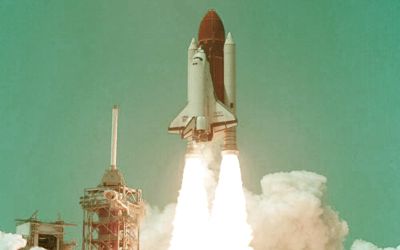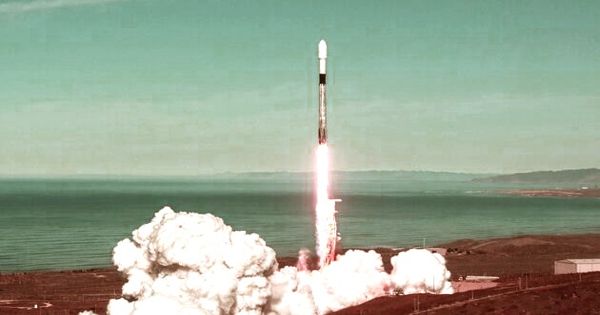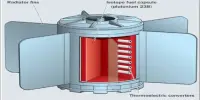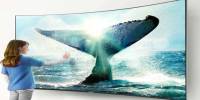Spaceflight is a flight beyond Earth’s atmosphere. It is an application of astronautics to fly spacecraft into or through outer space, either with or without humans on board. There is no definitive boundary above Earth at which space begins, but, in terms of the limiting altitude for vehicles designed for atmospheric flight, it may be considered to be as low as 45 km (28 miles).
Spacecraft are considered separately from the rocket-powered vehicles that launch them vertically into space or into orbit or boost them away from Earth’s vicinity.
Spacecraft is a general term for objects launched into space—e.g., Earth-orbiting satellites and space probes, experiment capsules, the orbiting modules of some launch vehicles (e.g., the U.S. space shuttle or the Russian Soyuz), and space stations. Yuri Gagarin of the Soviet Union was the first human to conduct a spaceflight. Examples of human spaceflight include the U.S. Apollo Moon landing and Space Shuttle programs and the Russian Soyuz program, as well as the ongoing International Space Station. For the development of space travel and discussions of spacecraft and space programs and their contributions to scientific knowledge and human welfare.

A space probe is an unmanned spacecraft that is given a velocity great enough to allow it to escape Earth’s gravitational attraction. Examples of uncrewed spaceflight include space probes that leave Earth orbit, as well as satellites in orbit around Earth, such as communications satellites. A deep-space probe is a probe sent beyond the Earth-Moon system; if sent to explore other planets, it is also called a planetary probe. These operate either by telerobotic control or are fully autonomous.
An experiment capsule is a small unmanned laboratory that is often recovered after its flight. Spaceflight is used in space exploration, and also in commercial activities like space tourism and satellite telecommunications. A space station is an artificial structure placed in orbit and equipped to support human habitation for extended periods. Applications spacecraft have utilitarian tasks, such as telecommunications, Earth observation, military reconnaissance, navigation and position-location, power transmission, and space manufacturing.
Spacecraft differ greatly in size, shape, complexity, and purpose. Additional non-commercial uses of spaceflight include space observatories, reconnaissance satellites, and other Earth observation satellites. A scientific satellite or probe carries instruments to obtain data on magnetic fields, space radiation, Earth and its atmosphere, the Sun or other stars, planets and their moons, and other astronomical objects and phenomena.
Information Source:
















